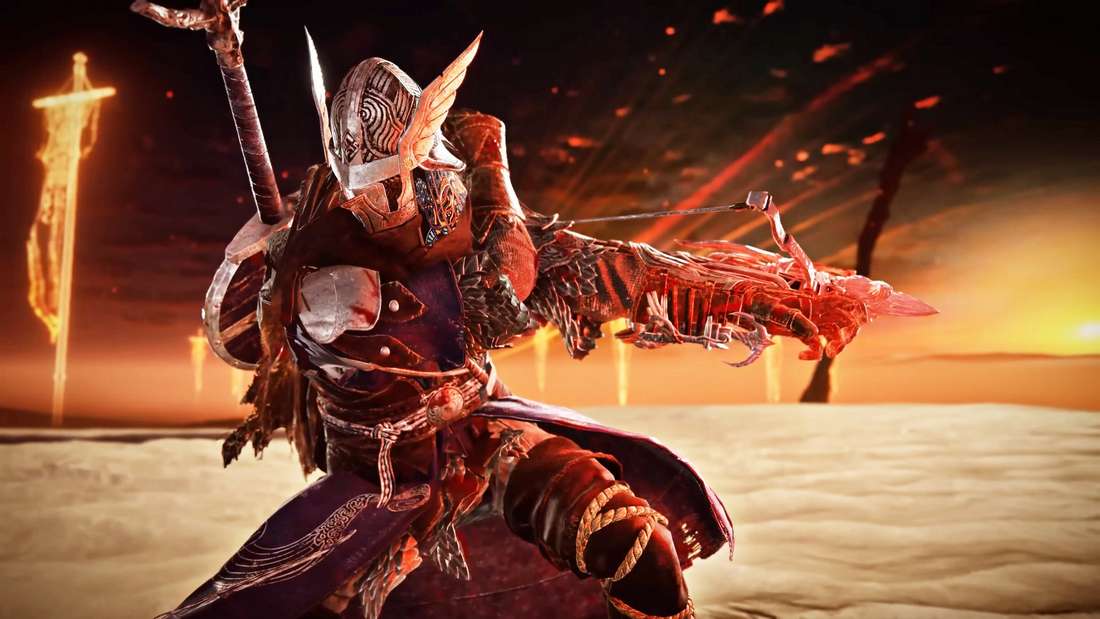The Nightlord Hierarchy: Core Bosses in ELDEN RING NIGHTREIGN
Popular Now
 Unlike the sprawling world of the original Elden Ring, ELDEN RING NIGHTREIGN features a more condensed, repeatable structure centered around the Night Bosses—known collectively as the Nightlords. These are the primary antagonists that a party of Nightfarers must defeat before the ‘Day’ concludes. There are eight core Nightlords in the game’s initial release, each with multiple phases and unique mechanics that demand optimized co-op builds and flawless execution.
Unlike the sprawling world of the original Elden Ring, ELDEN RING NIGHTREIGN features a more condensed, repeatable structure centered around the Night Bosses—known collectively as the Nightlords. These are the primary antagonists that a party of Nightfarers must defeat before the ‘Day’ concludes. There are eight core Nightlords in the game’s initial release, each with multiple phases and unique mechanics that demand optimized co-op builds and flawless execution.
The total boss count is dynamic, as each core Nightlord transforms into an Everdark Sovereign variant on higher difficulties, effectively doubling the final boss encounters, not including the numerous mid-level elites and mini-bosses.
The Eight Core Nightlords:
- Gladius: Often encountered first, this boss tests the fundamental parry and dodge mechanics.
- Adel: A tricky sorcerer requiring strong anti-magic and high Poise damage.
- Gnoster: Known for debilitating Plague status effects, demanding high Focus and cleansing Incantations.
- Libra: Infamous for its Curse mechanics, necessitating quick burst DPS to avoid phase transitions.
- Maris: A mobility-focused boss that punishes ranged characters with AoE bubbles and rapid repositioning.
- Fulghor: A heavily armored tank that demands stamina management and constant uptime on Bleed or Frost buildup.
- Caligo: A chaotic, multi-phase fight that serves as a major teamwork check.
- Heolstor: The final, most complex Nightlord, requiring mastery of all previous mechanics and an ultra-optimized damage rotation.
 Mini-Bosses and Elite Encounters: The Day Cycle Challenges
Mini-Bosses and Elite Encounters: The Day Cycle Challenges
The Day Cycle is punctuated by numerous challenging elite enemies and mini-bosses that are recycled and re-contextualized from the original Elden Ring, but with new move sets and co-op tuning. Defeating these is crucial for acquiring the Relics and Dormant Powers necessary to power up before the Nightlord confrontation. Skipping these mini-bosses will result in a severely under-geared run.
Key Mini-Boss Categories and Examples:
- Reimagined Standard Bosses: These are familiar faces with new attack patterns tailored for the roguelite format. Examples include the Ancient Dragon, Crucible Knight, and various Crystalians. The Crucible Knight, in particular, has a faster attack chain that tests co-op synergy.
- Nightfarer Guardians: Elite variants tied to the Nightfarer Classes (e.g., Wylder, Guardian, Duchess, Recluse). These challenge players with the class’s signature ultimate skills, often acting as a mirror match to punish single-build reliance.
- Chromatic/Sanguine Elites: These high-HP, high-damage foes drop the best upgrade materials and rare Relic blueprints. Examples include the Sanguine Noble and powerful Fire Prelate variants that require specific elemental weakness exploitation.
- Unique Adversaries: Bosses like the Elder Lion and the Flying Dragon (with modified area effects) are strategically placed to test player map awareness and crowd control.
 The Everdark Sovereign Tier: Deep of Night Difficulty
The Everdark Sovereign Tier: Deep of Night Difficulty
On the highest difficulty levels (referred to as Deep of Night or Depth 5+), the eight core Nightlords are replaced by their Everdark Sovereign forms. These variants possess drastically higher HP, entirely new phase 3 mechanics, and often feature powerful trio combinations (e.g., Gladius Trio), which multiply the challenge and require a perfect three-player build synchronization to overcome. This is the ultimate endgame content for ELDEN RING NIGHTREIGN and contains the true final boss count for completionists.
The total boss and mini-boss count in ELDEN RING NIGHTREIGN is highly dependent on the player’s progression, but the core repeatable list consists of 8 Nightlords plus their 8 Everdark Sovereign variants, along with a rotating roster of over 30 unique mini-boss and elite encounters encountered in each run, ensuring high replay value and a continuous demand for skill optimization.